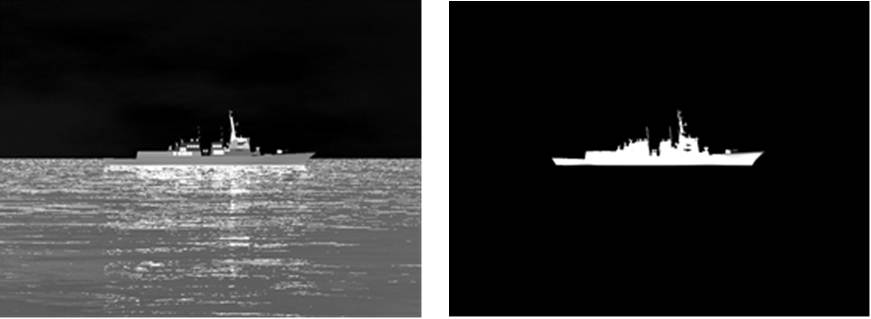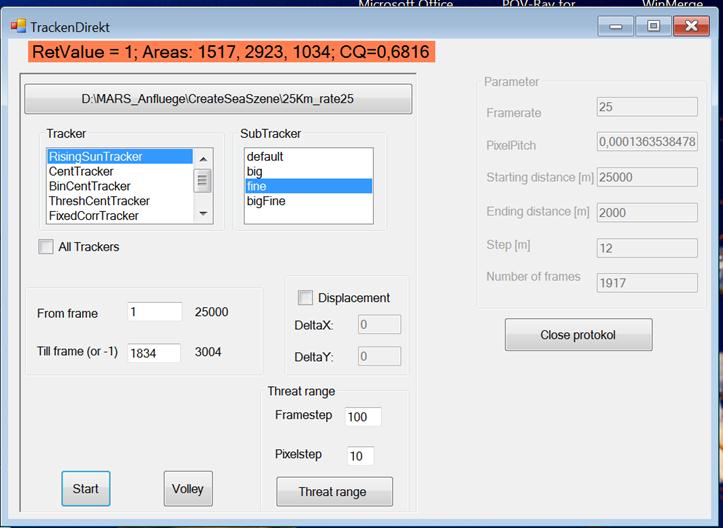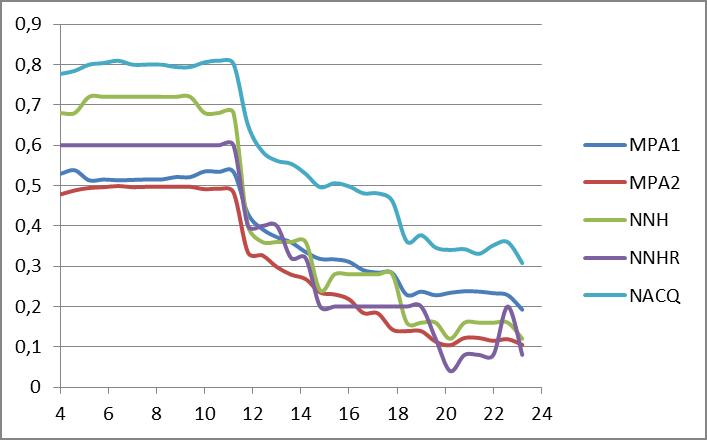Situation
Vessels of the federal naval forces of Germany are in global service today and thus subject to asymmetric threats. Up to now e.g. the harassment caused by thermal seeker-heads and the effectiveness of possible countermeasures can only be assessed inadequately.
Task
This project aims at evaluating possible countermeasures of a ship against thermal seeker guided weapons. Generic variants of trackers and their performance as function of environment and countermeasures are investigated and assessed, resulting in threat ranges and hit-probabilities. In the end this will help the captain with decisions concerning countermeasures and keeping safe distances.
Project
Approaches on ships are simulated using thermal rendering tools. Such simulation is very flexible and provides a perfect ground-truth silhouette for every frame.

Left: Exemplary frame of an approach of a thermal seeker head guided weapon on a ship. Right: Ground-truth.
The rendered approach sequence is input to the generic tracker methods. Evaluation is automatically performed on the last frame. A Graphical User Interface provides Access to parameters of the rendering, the environment, the algorithms etc.

User-Interface accessing parameters of the rendering and the trackers.
From many simulated approaches functions can be obtained relating ranges with hit probabilities.

Example curves. Horizontal axis: Lock-on distance in km; vertical axis: Different estimations of hit-probability.
Such functions are investigated for different ship signatures, background characteristics, environments, and countermeasures.
 Fraunhofer Institute of Optronics, System Technologies and Image Exploitation IOSB
Fraunhofer Institute of Optronics, System Technologies and Image Exploitation IOSB